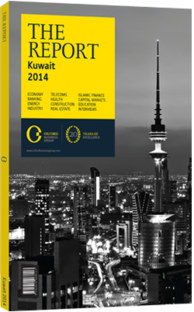Banking
The Company
Kuwait Finance House (KFH) was established in 1977 as Kuwait’s first Islamic financial institution. It was listed on the Kuwait Stock Exchange (KSE) in 1984 and is the second-largest listed firm on the KSE, with a market capitalisation of KD3.5bn ($12.31bn). KFH is also the second-largest local financial institution in terms of total assets, at KD16.1bn ($56.61bn) and customer deposits, at KD10.1bn ($35.51bn). The bank also reported the largest non-performing loans portfolio of KD844.4m ($2.97bn) at end-2013, highlighting significant risk within its portfolio.
Major international rating agencies, namely Moody’s, Fitch Ratings and Standard & Poor’s continue to rate KFH’s long-term and short-term ratings in the investment grade within the A category, although in May 2013, Moody’s downgraded the bank’s long-term ratings by one notch to A1 from Aa3, citing continued asset quality pressures, increasing reliance on volatile investment income, organisational complexity and an overall risk profile inconsistent with global peers.
As part of the bank’s five-year strategic plan ( 2012-16), KFH increased its capitalisation via a 20% rights issue during 2013, infusing KD319.5m ($1.12bn) of additional capital. This boosted the bank’s Tier 1 ratio to 17.23%, slightly above the target of 17% by the end of 2013. The bank plans to use the proceeds in projects that cement its market share, such as reinforcing the bank’s presence through new branches in various areas. Moreover, with the new restructuring plan, the bank targets to improve overall asset quality with a more rigorous approach towards risk management and allocation of funds in specific sectors, improvements in organisation and reporting structure as well as incorporating transparency in its management and improving coordination and cooperation across the bank.
In 2013, KFH continued to dominate the local Islamic banking market and won several awards for being the country’s best Islamic bank. The bank’s total assets have grown at a compound annual growth rate of 10.6% over the past six years, whereas its deposit base is more diversified than most of its peers in Kuwait. In terms of loan portfolio and deposit base, KFH ranks second after NBK, with a market share of 23.6% and 24.7%, respectively. KFH continued to broaden its network of branches, locally as well as internationally, and currently has 355 branches worldwide. KFH’s net loan portfolio reached KD8.4bn ($29.54bn) at the end of 2013, growing at a marginal rate of 1.6% y-o-y, one of the slowest growth rates in the past six years. The bank’s deposit base increased at a faster pace of 7.9% in 2013, a slight decline from the growth rate in 2012 of 8.9%.
KFH’s asset quality indicators deteriorated during 2013 after seeing an improvement in 2012, with NPLs surging to KD844.4m ($2.97bn) in 2013, up from KD679.6m ($2.39bn) in 2012, corresponding to an NPL to gross loans ratio of 9.5% as of December 2013, compared with 7.7% in December 2012. The increase in NPLs during 2013 was primarily related to lending to financial institutions and the real estate and manufacturing sectors. Although booked provisions declined to KD223.8m ($786.9m) during 2013 as compared to KD251.4m ($883.95m) during 2012, it still remains elevated as compared to banking peers. The decline in provisions resulted in higher net profits for 2013 that reached KD115.9m ($407.5m) as compared to KD87.7m ($308.36m) during 2012. The key concern facing the bank relates to its asset quality and exposure to the real estate market, which is typical for a bank in Kuwait.
Development Strategy
Despite the slow rate of growth in the domestic loan market in 2013, KFH continued to demonstrate growth in loans and total deposits. As the operating environment improves, both in Kuwait as well as in other markets where KFH maintains operations, the bank is expected to sustain, if not exceed, the current growth momentum. The market in Kuwait has started to witness some acceleration in the tendering, award and execution of some of the large projects as the government seemed more determined to advance the execution of the development plan. This is expected to drive loan growth in the near term.
You have reached the limit of premium articles you can view for free.
Choose from the options below to purchase print or digital editions of our Reports. You can also purchase a website subscription giving you unlimited access to all of our Reports online for 12 months.
If you have already purchased this Report or have a website subscription, please login to continue.

